Retro Roadmap Writeup
This is a piece from an article I wrote about both Derby Racer rides in the US for the National Trust for Historic Preservation. Since the other Derby Racer is highlighted in the Retro Roadmap piece on Rye Playland I wanted to make sure we had the Cedar Point one on the map too!
Cedar Downs Racing Derby
Cedar Point Amusement Park - Sandusky, Ohio
The merry-go-round -- clinging to the brass pole with the horses gliding up and down to the tinkling sounds of the band organ -- is probably the one of the first amusement ride memories one has as a child. With their gentle appeal to riders of all ages, carousels remain a staple at any amusement park or carnival.
But there was a time at the beginning of the twentieth century when a “grown up” version of the carousel was available to the more adventurous. Sometimes thought of as inverted carousels since the poles and mechanisms were tucked underneath the quickly spinning track, they gave riders the opportunity to experience the rush of horse racing. Flying along at speeds twice as fast as the more sedate carousels, these hand-carved horses raced against each other to an imaginary finish line.
Known originally as the Great American Racing Derby, these historic thrill rides were created and patented by roller coaster builders Prior & Church in 1917. Because of the intricate mechanisms required to maintain their eccentric racing routes, only a handful of them were ever created, and now only two remain in existence in the entire United States.
The trumpet blows...and they’re off!
Opened in 1870 on the banks of Lake Erie, Cedar Point is the second oldest operating amusement park in the U.S. While it is now known for its more extreme rides and roller coasters, it is also home to the oldest of the two U.S. Derby Racers.
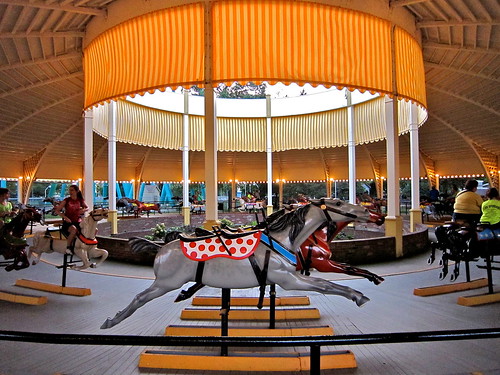
Originally built in 1921 for Euclid Beach park near Cleveland, Ohio, it was known as the Great American Derby Racer and delighted riders there for almost 50 years. In 1967 Cedar Point purchased and restored the ride and installed it at its current location along the midway.
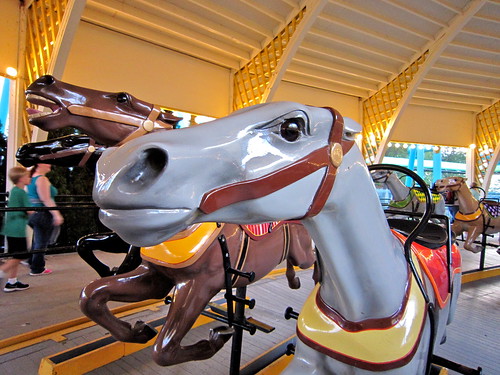
Renamed the Cedar Downs Racing Derby, it is the larger of the two derby racers, with 64 horses carved by the Williams Amusement Device Company of Denver Colorado, which carved and shipped horses throughout the U.S. While not as intricate as their Rye Playland cousins, their blocky, elongated bodies with outstretched legs easily easily hold two riders as they gallop around the 93 foot track.
The Cedar Downs Racing Derby was restored to its original condition in 1980 with the racing mechanism in full operation, allowing each horse to move back and forth as well as up and down, at a speed of almost 15 miles per hour. A complex combination of cables and wheels along a wavy rail allow all four horses in the row to race neck-and-neck to see who will win by a nose.
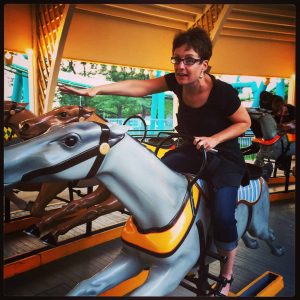
Published
Location
Address / Phone
- 1 Cedar Point Dr, Sandusky, OH 44870
- 419-627-2350

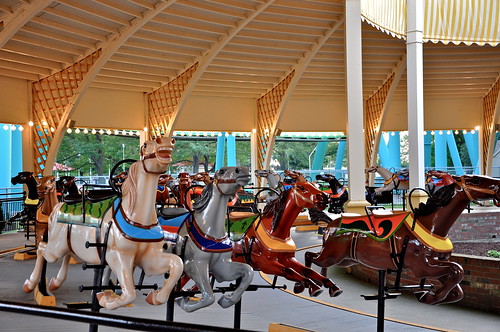
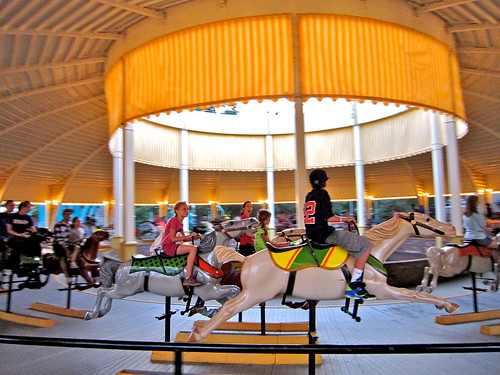


Add a comment